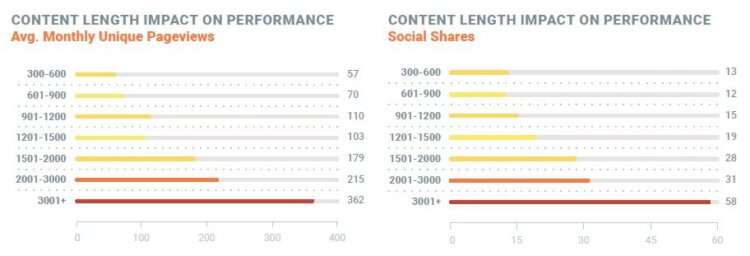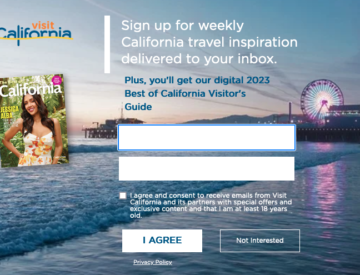 The first edition of Social Media Examiner’s Content Success Summit 2013 is almost a thing of the past but the past few weeks have been a thought-provoking journey.
The first edition of Social Media Examiner’s Content Success Summit 2013 is almost a thing of the past but the past few weeks have been a thought-provoking journey.
And while content marketing is the new advertising, I thought it would be interesting to gather some of the learnings and practical examples taken from the various presentations and translate them into the travel and hospitality world. In essence, it boils down to a six-step process:
1. HAVE A CONTENT MARKETING MISSION STATEMENT
One of the most important takeaways came from the opening keynote by Content Marketing Institute founder, Joe Pullizi, when he stated the importance for brands to have a clear content marketing mission statement in place. Thus, before starting to produce content, an organization should be clear about its strategy, by first answering these three questions:
- Who is our core target audience?
- What will be delivered?
- What is the expected outcome for the audience?
One might argue that this actually represents the equivalent of what a brand mission statement actually is, which would be correct to a large extent. I recall doing this exercise with a ski resort where we had analyzed the sentiment, tone and nature of comments on the Facebook page in order to better understand what it was that drew loyal fans to engage with the brand online.
Doing so allowed to better define the target audience as avid powder hounds, urban dwellers seeking getaways to the mountain and, in more generic terms, folks who felt they were still kids at heart! This process helped develop powerful persona, allowing to have a clear tone and manner in how to deliver content, both offline and online.
The expected outcome was also defined in terms of giving away generous information, humorous visuals and tongue-in-cheek, real-time comments. In other words, brand advocates had to recognize online what they had grown to know and appreciate of the brand offline in the past 30 years.
2. IDENTIFY TACTICS
The next step is perhaps the most difficult one: choosing among the various communications tactics. With the explosion of social media, mobile devices and collaborative platforms, which ones are the most adequate to achieve your objectives? Here is a brief list of possibilities:
- Corporate blog
- Content-rich website
- Podcasts
- Videos
- Photos
- Whitepapers
- Newsletters
- Webinars
- Case studies, ebooks & white papers
- FAQ (Frequently Asked Questions)
In the hospitality sphere, photos and videos have a disproportionate importance when potential clients are still in the early stages of the decision-making process, drawing aspiration for a new travel destination or considering accommodation options.
Yet when it’s time to book, content may be king but context is queen: a mobile optimized site can make or break the deal nowadays, so industry players are adapting to this reality. Content is also what is being generated by users on sites such as TripAdvisor and Yelp, influencing other travelers in their decision-making along the way. Hospitality decision-makers need to manage their e-reputation in order stay competitive and avert potential crises. (Read: 7 steps to manage your e-reputation)
3. ALLOCATE RESOURCES
Having a clear mission statement and identifying the proper channels and tactics will only bring you as far as the resources you put in place to achieve inherent goals. In the hospitality industry, a vast majority of organizations are actually medium-sized, small or very small, which means limited resources in place to create any content whatsoever. An original content marketing approach can however overcome these hurdles.
Some examples include:
- A restaurant owner noticed patrons often taking pictures of food items via their mobile devices, so he decided to create a menu inspired by the Instagram visuals. Crowdsourcing thus replaced costly, frequent professional photo sessions as well as tapping into social proof for validation of what’s good and popular on the menu;
- A year-round resort with ski hill and golf courses noticed its call center experienced seasonal downtimes or weekly highs and lows. They trained and retrained the staff in order for them to have necessary skill sets to monitor online conversations and engage on platforms such as Twitter, Foursquare, Facebook, Linkedin and even public forums or blogs. It was an novel approach to re-purposing job definitions while responding to a corporate need;
- A hotel property could hardly justify having its marketing person handle exclusively web content and social media until they built a series of metrics about what situations were being handled. Turns out only 35-40% of topics were related to marketing: advertising, promotions, etc. The balance was a mix of customer service issues, operations, and even community-based topics, i.e. Public Affairs.
4. MONITOR CONVERSATIONS
Feedback is provided on a daily basis in the hospitality world, both online and offline. While we have various systems and tools in place to monitor what’s being said online, how do we capture the essence of offline feedback? There are three key components to consider:
- You need to have some kind of tracking system, or content management system (CMS) for your organizations. Hotels are used to property management systems, while most brands have some kind of customer relationship management (CRM) tool in place, allowing to capture customer feedback, preferences and integration with historical transactional data.
- Staff needs to be trained, with often refreshers, on the significance of capturing verbal and non-verbal feedback from customers. In particular when a customer seems annoyed or troubled, prompting for feedback is of utmost importance. Without doing so, the CMS will reproduce the good old principle of “garbage in, garbage out”…
- Acknowledge the feedback. Customers love to share experiences and give ideas, but they will cease to do so if they don’t get the feeling their comments are making a difference or are being heard at all. Even if the feedback was given at the reception desk or via a paper form left in the room, good practice is to send out an email acknowledgement to the client, thanking her for the ideas and, if possible, providing results or answers to the questions raised.
Monitoring conversations, both online and offline, is perhaps the most powerful way to keep coming up with fresh, relevant content for your target audience since it will address questions or concerns that resonate with the passionate base of customers who are already sharing about your brand.
5. TEST NEW IDEAS AND PLATFORMS
While it’s important to have a strategy in place as you start the year, it’s equally important to seize new opportunities as they become available in order to gain a competitive edge.
It is fair to say that early in 2012, not many travel industry marketers had identified Pinterest or Instagram as part of their marketing tool box, yet those who saw its potential quickly jumped onboard to take advantage of its benefits with a growing customer base. Testing new ideas can also mean new kinds of contests and tweaking your approach in order to make the most of your presence on Facebook, for example.
Testing new ideas or platforms can sometimes mean you will fail, or perhaps not achieve the desired results, but this needs to be factored in as part of the social media journey online. KLM keeps coming up with novel concepts to engage with its customer base, some better hits than others, but always leading edge. Its most recent initiative: Must See Map. A brilliant idea where content is actually generated by your own circle of friends…
6. DEFINE SUCCESS AND MEASURE IT
Last but not least, there needs to be accountability and a way to measure what is being done. Before a brand decides to invest more into its content marketing endeavors it will obviously seek to know what return it is yielding with its ongoing efforts.
Now, there are countless articles, books and blogs that cover the specific topic of social media ROI and the challenge it represents, so I will not go in-depth here – I did cover it in The 7 Business Drivers of a Social Media Strategy. You should however be clear about how you will define the success of your content marketing, which usually refers to one of the following objectives:
- Increase revenues
- Decrease operational costs
- Enhance customer experience
Groupe Germain Hotels
The last example comes from Groupe Germain, owners of boutique hotels in Canada. I love how they used Instagram to connect with their connected, mobile customer base in this contest, seeking creativity while crafting a mural for their newly-opened Alt hotel in Toronto’s Pearson International Airport.
In this case, metrics are provided, in terms of photos generated, awareness and buzz created. Yet, it was also a novel product development approach, impacting positively customer experience – the mural is a key part of the newly designed lobby – while potentially reducing the operational cost, had they decided to go with a professional firm to do everything by themselves rather than crowdsourcing it.
Do you have other examples of brands making great use of content marketing in the hospitality realm? Or perhaps in a different vertical? I would love to hear your thoughts.










Leave a Reply